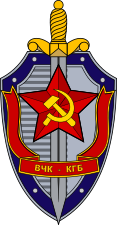When you think of Russians, what do you think of? Large, burly men named Ivan that drink vodka all day? While there are undoubtedly men named Ivan in Russia that drink vodka, there are many more ‘types’ of Russians, many different ethnic groups make up Russia.
This is especially true for the time leading up to the Russian Revolution. In the lead up to the revolution there was everything from Mongols to Varangians living within Imperial Russia. For example, this picture taken by Sergei Mikhailovich Prokudin-Gorskii shows a family of Kazakhs, a Turkic people. Kazakhs are a nomadic people, located in nowadays Kazakhstan, thus the name. This Kazakh family is presumably migrating in search of food, water, and shelter in order to sustain themselves.
We as historians can learn a few things from this photo. One of the first things that came to my mind was the disparity of wealth between the Russian people. On the bottom you have nomads and serfs with very little to their name whereas on the top, you have the immense wealth of the Tsar and the rest of the gentry. Another thing of note is how quickly various ethnic groups assimilate to Russian culture once the revolution occurs. Perhaps it’s merely my ignorance as a student that I haven’t heard any stories of Kazakhs or Uzbeks doing anything of note during the Soviet Union but I think it’s because they just became Russian and lost their natural identity.
This photo also begs some questions. For instance where are they going? The text that comes with the photo says it was taken on the Golodnaia Steppe, found on the bottom border of modern day Kazakhstan. Also, what happened to them? The world got really unpleasant for a few years after this photo was taken.

You brought up some very good points through talking about this photo by Prokudin-Gorskii’s and posed some important questions. I also can not recall anything specific about the Kazahks or the Uzbeks occurring over the Soviet area. Where simply forgotten as an separate people and lumped into the Russian/Soviet society like you suggest with there lose of identity. Furthermore, the question you pose at the end is very interesting. Did the majority of these people in ethnic groups flee elsewhere during the war and then following revolution? How where they treated under the Soviet rule? Hopefully we can further learn these things throughout the class.
LikeLike
I never really considered how ethnically diverse Russia would’ve been at this time. It is definitely important to keep in mind that this was prior to the falling out of a lot of the satellite states causing the overall country to be extremely diverse in race, religion, and culture. You chose a really great image to showcase because it shows one of the many minorities living under Tsar Nicholas II. Anyways, keep up the great work and I’d love to see more!
LikeLike
I am glad that you chose to highlight the multinational aspect of Russia! Even today, Russia is not 100% Russian. You noted their meager situation and wealth disparity, this is important because we will see reforms try and address these issues, especially economic disparity, in the near future. If you are interested, you could do a future post on the role of minority groups during the Revolutions. Good post! Next time include your sources.
LikeLike
I love the start of this post. It made me want to read more! And you chose a really powerful image to write about. What sources are you using? Check back and confirm that you’re saying what you mean here — you might be thinking of Khazars (Jewish) rather than Kazakhs (Muslims).
LikeLike
It really is easy to forget that the majority of Russia is located in Asia, we tend to think of Russia being Moscow and Saint Petersburg but not much else. Most of the country is east of the Ural mountains but it’s largely ignored by the western masses
LikeLike
You will also want to cite the source of your image — turns out these people are Kyrgyz.
LikeLike